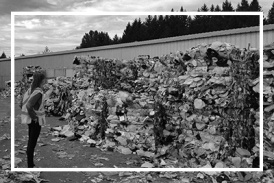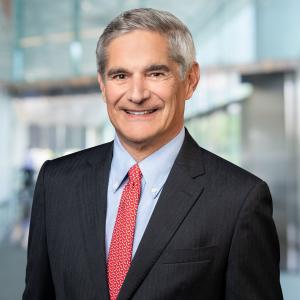TWO HILL FARRER PARTNERS NAMED 'LEGAL VISIONARIES' BY LOS ANGELES TIMES
Those awarded are “some of the best and brightest in a large and highly competitive world of Southern California professionals, but it is their dogged dedication to both clients and craft that make them worthy of this recognition,” states the publisher.
Trial attorney Kevin Brogan is known for his success on eminent domain and inverse condemnation cases, and other real property and business actions often involving valuation issues. “He authored the California chapter of The Law of Eminent Domain for the ABA and is a fellow of the American College of Trial Lawyers,” the feature states. “Brogan has successfully represented clients in high-profile cases, including disputes involving the Los Angeles International Airport and the Los Angeles County Metropolitan Transportation Authority. He also defends professionals in malpractice and fiduciary duty cases.”
Brogan’s clients range from multinational corporations to individual real property and business owners and include owners of major shopping and retail centers, distribution and industrial uses, hotels, office and apartment buildings as well as oil and gas properties.
Paul Porter is a business and real estate litigator who “represents Fortune 500 companies, individuals, property owners, public agencies and businesses in real estate, contract, business disputes, eminent domain and inverse condemnation,” according to the publication. “He collaborates closely with clients to navigate challenges and minimize unnecessary litigation. He advocates for private property owners in eminent domain cases, leveraging experience from representing public agencies in hundreds of acquisitions.”
Porter has extensive experience handling jury, non-jury, arbitration and administrative cases throughout the California courts, and all manner of mediation and settlement alternatives. In his appellate practice, Porter has pursued and responded to appeals on business, real estate, eminent domain, and inverse condemnation issues, and the prosecution and defense of appellate writs and administrative claims against public agencies.
Jonathan Fitzgarrald
Equinox Strategy Partners
+ +1 3106016008
email us here
Visit us on social media:
LinkedIn
Legal Disclaimer:
EIN Presswire provides this news content "as is" without warranty of any kind. We do not accept any responsibility or liability for the accuracy, content, images, videos, licenses, completeness, legality, or reliability of the information contained in this article. If you have any complaints or copyright issues related to this article, kindly contact the author above.
Trusted Legal Guidance for Families in Times of Transition
Critter Stop Offers Permanent Solutions to Homes and Businesses with Launch of Pest Control in Richardson, Texas
Protection Tax Helps Clients Resolve Unfiled Returns Before IRS Action Escalates
Kalendarium
Więcej ważnych informacji
 Jedynka Newserii
Jedynka Newserii

 Jedynka Newserii
Jedynka Newserii

Handel

Ze względu na różnice w cenach surowce wtórne przegrywają z pierwotnymi. To powoduje problemy branży recyklingowej
Rozporządzenie PPWR stawia ambitne cele w zakresie wykorzystania recyklatów w poszczególnych rodzajach opakowań. To będzie oznaczało wzrost popytu na materiały wtórne pochodzące z recyklingu. Obecnie problemy branży recyklingu mogą spowodować, że popyt będzie zaspokajany głównie przez import. Dziś do dobrowolnego wykorzystania recyklatów nie zachęcają przede wszystkim ceny – surowiec pierwotny można kupić taniej niż ten z recyklingu.
Przemysł spożywczy
Rośnie presja konkurencyjna na unijne rolnictwo. Bez rekompensat sytuacja rolników może się pogarszać

Rolnictwo i żywność, w tym rybołówstwo, są sektorami strategicznymi dla UE. System rolno-spożywczy, oparty na jednolitym rynku europejskim, wytwarza ponad 900 mld euro wartości dodanej. Jego konkurencyjność stoi jednak przed wieloma wyzwaniami – to przede wszystkim eksport z Ukrainy i niedługo także z krajów Mercosur, a także presja związana z oczekiwaniami konsumentów i Zielonym Ładem. Bez rekompensat rolnikom może być trudno tym wyzwaniom sprostać.
Transport
Infrastruktury ładowania elektryków przybywa w szybkim tempie. Inwestorzy jednak napotykają szereg barier

Liczba punktów ładowania samochodów elektrycznych wynosi dziś ok. 10 tys., a tempo wzrostu wynosi ok. 50 proc. r/r. Dynamika ta przez wiele miesięcy była wyższa niż wyniki samego rynku samochodów elektrycznych, na które w poprzednim roku wpływało zawieszenie rządowych dopłat do zakupu elektryka. Pierwszy kwartał br. zamknął się 22-proc. wzrostem liczby rejestracji w ujęciu rocznym, ale kwiecień przyniósł już wyraźne odbicie – o 100 proc.
Partner serwisu
Szkolenia

Akademia Newserii
Akademia Newserii to projekt, w ramach którego najlepsi polscy dziennikarze biznesowi, giełdowi oraz lifestylowi, a także szkoleniowcy z wieloletnim doświadczeniem dzielą się swoją wiedzą nt. pracy z mediami.










.gif)

 |
| |
| |
|